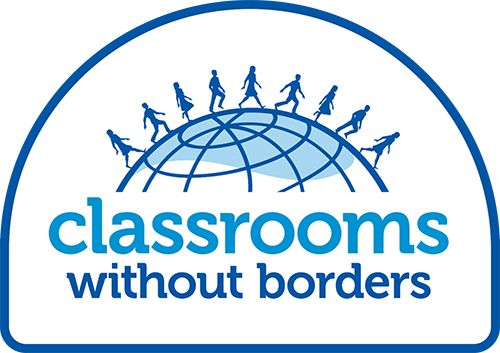Day 4 of the “Poland Personally” seminar is complete. Today we stopped in Wierzbnik-Starachowice, Howard Chandler’s home town. As we entered the town, the first thing we saw was the train station. As we passed the station, it brought me sadness. A train station that was such an integral part of daily life very quickly became the harbinger of death. From Wierzbnik-Starachowice, Jews met their ends through transport to concentration and extermination camps.
Next, we traveled to the town square. Before we departed for Wierzbnik-Starachowice, Howard Chandler and his daughter met the mayor and other dignitaries. During the meeting, Howard received a copy of his family’s school records. He exclaimed, “This is the proof of who I am… that I existed.” As educators, we deal with school records on a daily basis. It made me very emotional to be able to bear witness to Howard receive those records. We often take for granted the little things that are commonplace in our society. I will strive to notice those little things that could be more important than we realize at the time.

When we arrived at the town square, the group laid wreaths at the memorial to the Jews that were lost at Wierzbnik-Starachowice. As Howard spoke with the mayor and other dignitaries, his words echoed in our hearts: “We cannot bring back what was, but we cannot hide it.” As we were in the town square, we were able to see Howard’s childhood home. As he was speaking, our group was approached by a child who now resides in the town. This child was bilingual. As she listened to Howard’s story, Becky DiSaia explained to her our purpose in Wierzbnik-Starachowice. When Becky turned to look, the child had left our group only to return with her grandparents. We found out that this child, named Hannah, was twelve years old. In her twelve years, Howard’s story of the atrocities was the first time that she had heard the story of the Jews of Wierzbnik-Starachowice. She asked to meet with Howard and as the two spoke, Howard offered to show her his childhood home. Our hope is that Hannah will be able to pass along Howard’s story to the town and to future generations. Every person has the power to effect change on others during their time on this Earth. We feel that this is especially true in Hannah’s case. When we went to the Jewish cemetery to say Kaddish, both Hannah and her grandfather accompanied us.

After departing Wierzbnik-Starachowice, we traveled to Kielce and participated in the March of Memory and Reconciliation. As our families in the United States were celebrating the Fourth of July, we were honoring those Jews who were attacked and killed within the town of Kielce in a vicious pogrom on July 4, 1946, more than a year after the war had ended. In this attack, 42 individuals were killed and 80 were injured. Sadly, this story was hidden. Today is the 73rd anniversary of this horrendous event. This year marks the 20th march. The march began at the memorial, and from there, we walked along and across the park. Today we honored those who were lost.
Those who do not learn about the past are condemned to repeat it. We will share the stories of the fallen and their stories will live on through us.
Julie Schultz is a teacher at Bridge Street Middle School.
